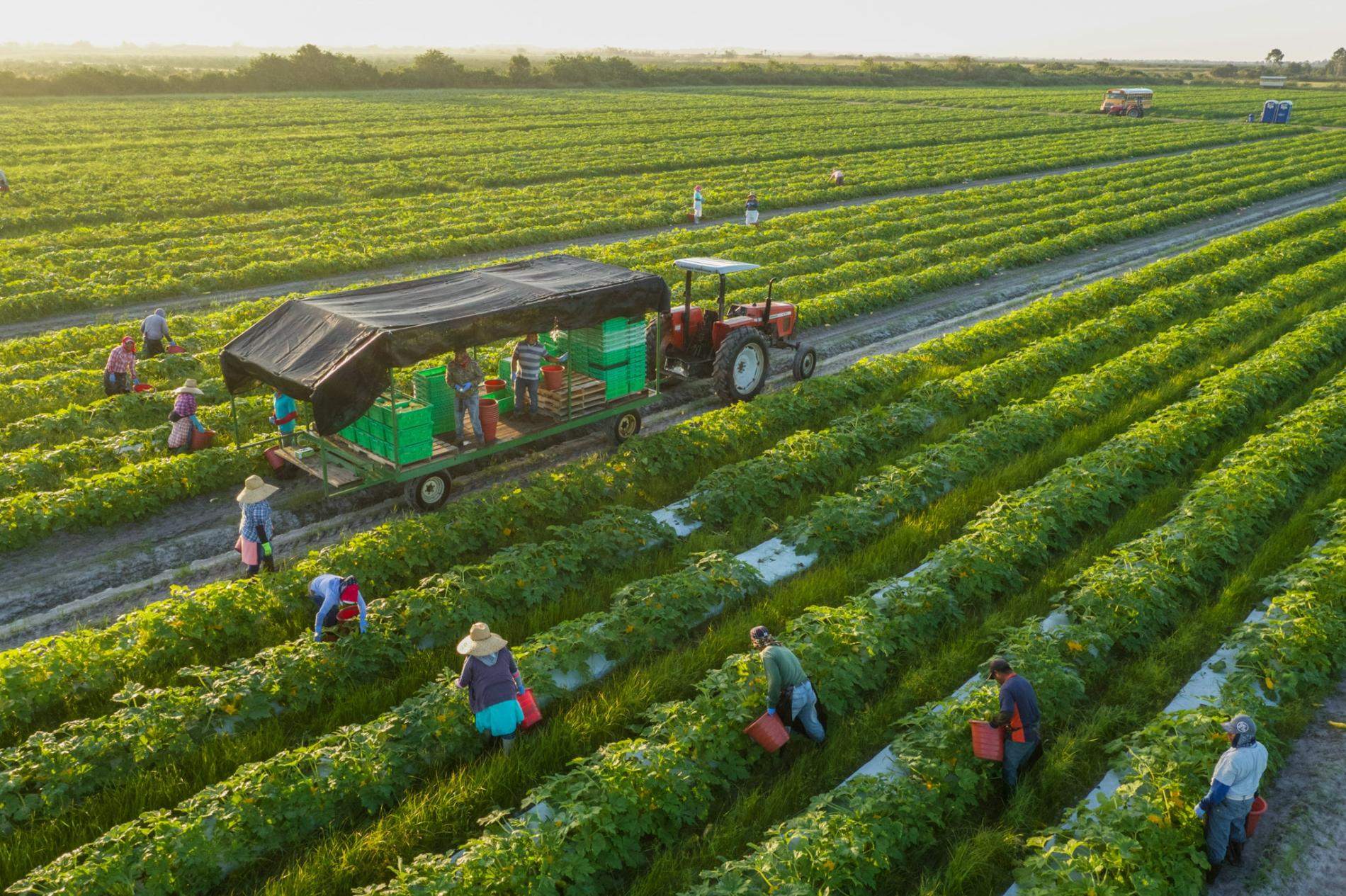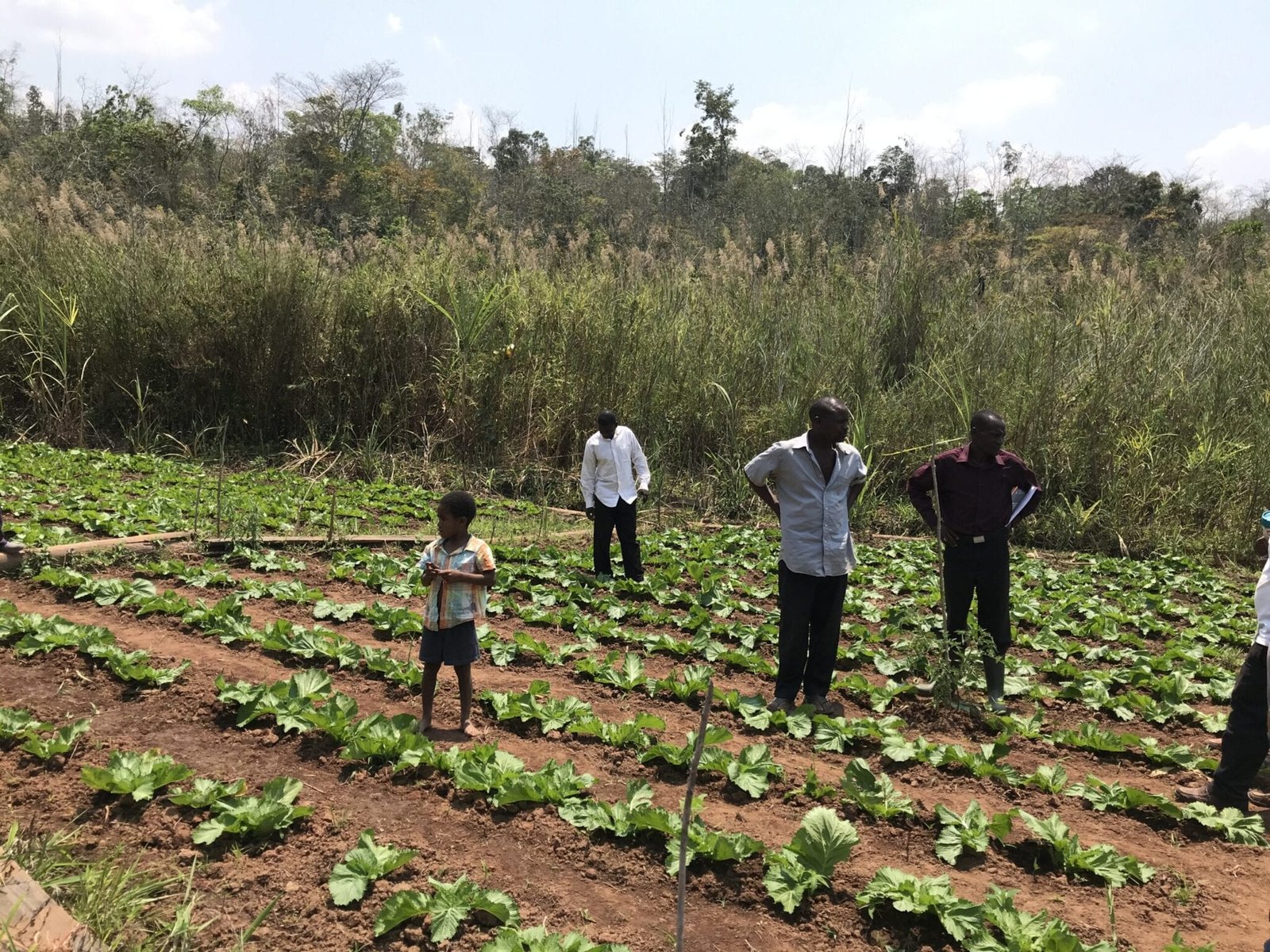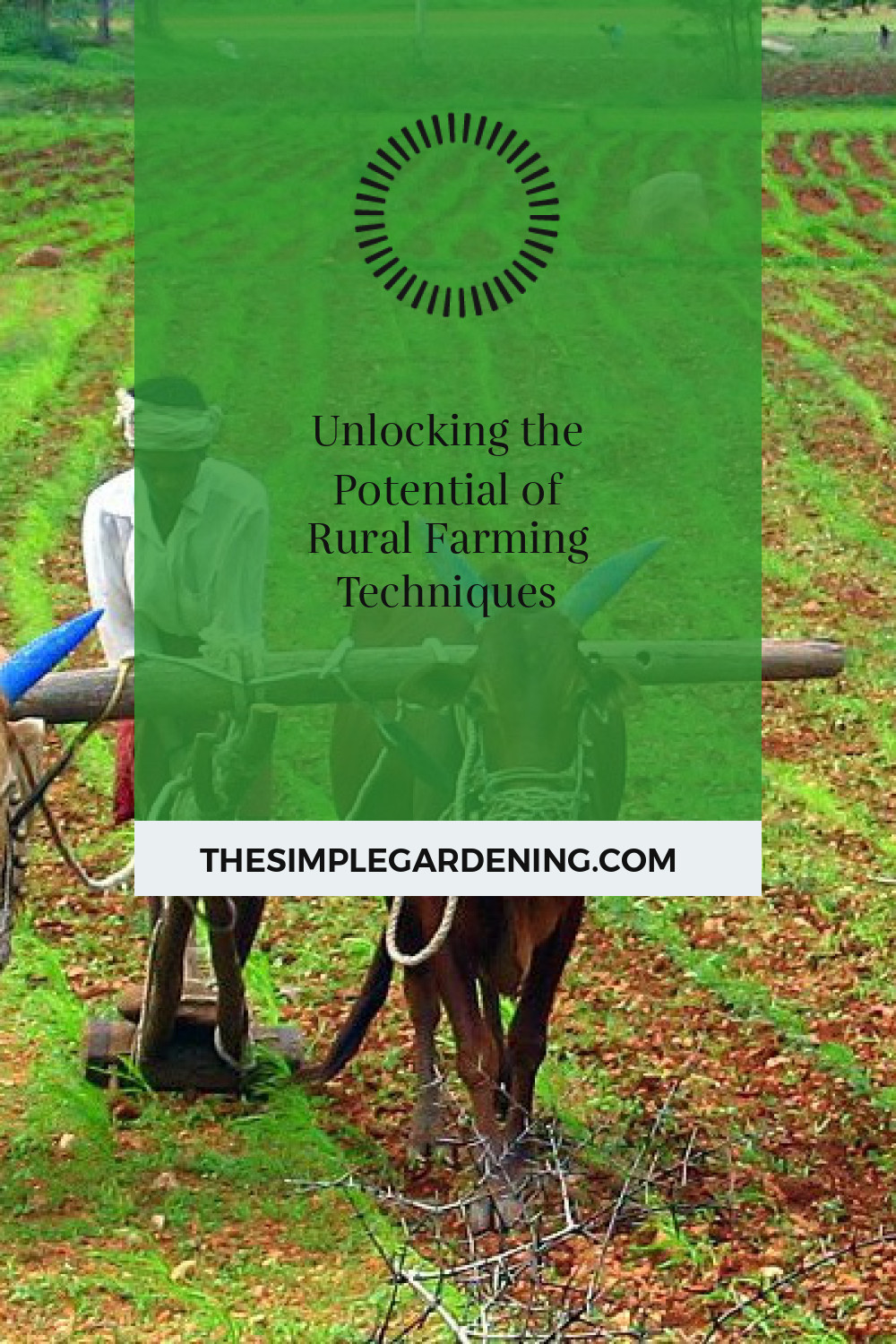Rural farming techniques have evolved significantly over the years, blending traditional wisdom with modern innovations. This blend has empowered farmers to enhance productivity while maintaining environmental sustainability. Let’s dive into the various aspects of rural farming, examining both historical practices and cutting-edge methods that are shaping the future of agriculture.
Introduction to Rural Farming Techniques
Definition and Importance
Rural farming techniques encompass a wide range of agricultural practices tailored to enhance crop production, soil health, and water efficiency in rural areas. These techniques are crucial for ensuring food security, sustaining rural economies, and maintaining ecological balance.
| Key Aspects | Description |
|---|---|
| Definition | Agricultural practices used primarily in rural areas to optimize crop yields and maintain soil health. |
| Importance | Ensures food security, supports rural economies, and promotes environmental sustainability. |
| Key Techniques | Soil preparation, seed selection, water management, pest control, nutrient management, and harvesting. |
| Modern Innovations | Incorporation of technology like drones, precision agriculture tools, and data analytics to improve efficiency and productivity. |
| Traditional Practices | Techniques passed down through generations, including crop rotation, organic fertilization, and natural pest control. |
Historical Perspective
Farming techniques have roots in ancient civilizations, with practices evolving to meet the changing needs of society and the environment. Historical methods often relied on local resources and knowledge, emphasizing sustainability long before it became a global concern.
Key Historical Farming Techniques:
- Crop rotation to maintain soil fertility.
- Use of organic manure and composting.
- Terracing and contour plowing to prevent soil erosion.
- Traditional irrigation methods like canals and wells.

Source Image: www.learncram.com
Current Trends and Innovations
Today’s rural farming integrates advanced technologies to address modern challenges such as climate change, water scarcity, and increasing demand for food. These innovations include precision agriculture, automation, and sustainable farming practices.
| Trend | Description |
|---|---|
| Precision Agriculture | Utilizes GPS and sensors to optimize planting, fertilizing, and harvesting. |
| Automation | Involves the use of drones and robots to monitor crops and perform tasks like weeding and harvesting. |
| Sustainable Practices | Emphasizes conservation agriculture, organic farming, and agroforestry to enhance environmental health. |
| Data Analytics | Uses data to predict crop yields, monitor soil health, and manage resources efficiently. |
| Climate-Smart Agriculture | Implements practices that mitigate the effects of climate change and enhance resilience. |
Soil Preparation Techniques
Soil Testing and Analysis
Understanding soil composition is the first step in effective farming. Soil testing helps determine nutrient levels, pH balance, and soil texture, guiding farmers in choosing the right fertilizers and amendments.
Steps in Soil Testing:
- Sample Collection: Gather soil samples from different parts of the field.
- Laboratory Analysis: Test samples for nutrient levels, pH, and organic matter content.
- Interpretation: Analyze results to determine soil health and necessary interventions.
| Nutrient | Ideal Range (ppm) | Impact on Crops |
|---|---|---|
| Nitrogen | 20-40 | Essential for leaf growth and green color |
| Phosphorus | 15-30 | Supports root development and flowering |
| Potassium | 100-200 | Enhances fruit quality and disease resistance |
| pH Level | 6.0-7.0 | Optimal range for most crops |
| Organic Matter | 3-5% | Improves soil structure and fertility |
Traditional Plowing Methods
Plowing prepares the soil for planting by breaking up the soil, incorporating organic matter, and controlling weeds. Traditional plowing, often done with animals or basic machinery, remains vital in many rural areas.
Modern Tillage Practices
Modern tillage involves using advanced machinery to prepare the soil more efficiently and sustainably. Techniques like reduced tillage and strip-till minimize soil disturbance, preserving soil structure and reducing erosion.
No-Till Farming
No-till farming eliminates plowing, leaving crop residues on the field to protect the soil. This method improves soil health, retains moisture, and reduces labor and fuel costs.
| Technique | Benefits | Challenges |
|---|---|---|
| Traditional Plowing | Controls weeds, incorporates organic matter | Can lead to soil erosion and compaction |
| Modern Tillage | Reduces erosion, improves soil structure | Requires investment in advanced machinery |
| No-Till Farming | Enhances soil health, conserves moisture | May require more herbicide use |

Source Image: pxhere.com
Seed Selection and Sowing Methods
Criteria for Seed Selection
Choosing the right seeds is critical for successful farming. Factors to consider include climate adaptability, disease resistance, and yield potential.
| Criteria | Importance |
|---|---|
| Climate Adaptability | Ensures crops thrive in local weather conditions |
| Disease Resistance | Reduces losses due to pests and diseases |
| Yield Potential | Maximizes production per acre |
| Maturity Time | Aligns with growing season and market demand |
| Seed Purity | Ensures genetic integrity and uniform growth |
Traditional Seed Sowing Techniques
Traditional sowing methods, such as broadcasting and dibbling, have been used for centuries. These techniques are simple and cost-effective, suitable for small-scale farms.
Precision Planting Techniques
Precision planting involves using machinery to place seeds at precise depths and spacing, optimizing germination and growth. This method reduces seed waste and improves crop uniformity.
Seed Treatment and Germination Enhancement
Treating seeds with fungicides, insecticides, or growth enhancers can improve germination rates and protect young plants from pests and diseases.
| Method | Benefits |
|---|---|
| Broadcasting | Quick and easy, suitable for large areas |
| Dibbling | Precise placement, reduces seed waste |
| Precision Planting | Optimizes seed use, improves uniformity |
| Seed Treatment | Enhances germination, protects against pests |

Source Image: theconversation.com
Water Management and Irrigation Systems
Traditional Water Harvesting Methods
Traditional methods like rainwater harvesting, check dams, and wells have long supported rural farming by providing reliable water sources.
Modern Irrigation Techniques
Modern irrigation systems, including drip and sprinkler irrigation, deliver water directly to plant roots, enhancing efficiency and conserving water.
Efficient Water Use Practices
Practices such as mulching, using drought-resistant crops, and scheduling irrigation based on weather patterns can significantly reduce water use.
Dealing with Water Scarcity
Adapting to water scarcity involves using drought-tolerant varieties, improving soil moisture retention, and implementing efficient irrigation practices.
| Method | Benefits | Challenges |
|---|---|---|
| Rainwater Harvesting | Provides a sustainable water source | Requires initial investment and maintenance |
| Check Dams | Controls runoff, recharges groundwater | May need regular desilting |
| Drip Irrigation | Reduces water use, targets root zone | High installation costs |
| Sprinkler Irrigation | Uniform water distribution, suitable for large areas | Can lead to evaporation losses |

Source Image: www.vaccinetours.com
Rural Farming Techniques
Crop Rotation and Polyculture
Benefits of Crop Rotation
Crop rotation involves alternating different crops in the same field to improve soil health and reduce pest and disease buildup.
Common Crop Rotation Strategies
Typical rotations might include legumes to add nitrogen to the soil, followed by cereals, and then root crops to break pest cycles.
Polyculture vs. Monoculture
Polyculture involves growing multiple crops together, enhancing biodiversity and reducing risk, while monoculture focuses on a single crop, which can increase vulnerability to pests and diseases.
Examples of Effective Polyculture Systems
Intercropping corn with beans or planting a mix of vegetables and herbs are examples of effective polyculture systems that maximize space and resources.
| Technique | Benefits | Examples |
|---|---|---|
| Crop Rotation | Improves soil fertility, reduces pests | Alternating legumes and cereals |
| Polyculture | Enhances biodiversity, reduces risk | Intercropping, companion planting |
| Monoculture | Simplifies management, can increase yields | Single crop fields like wheat or corn |
Organic Farming Practices
Principles of Organic Farming
Organic farming avoids synthetic chemicals, emphasizing natural inputs and sustainable practices to maintain soil health and ecosystem balance.
Composting and Manure Management
Composting organic waste and managing manure are essential for providing natural fertilizers that enrich the soil.
Natural Pest Control Methods
Using biological control agents, crop rotation, and organic pesticides helps manage pests without harming the environment.
Certification and Standards
Organic certification ensures that farming practices meet specific standards, providing consumers with assurance of product quality.
| Principle | Description |
|---|---|
| Avoiding Synthetic Inputs | Uses natural alternatives for fertilizers and pesticides |
| Enhancing Soil Health | Practices like composting and crop rotation to improve soil quality |
| Biodiversity | Promotes a diverse ecosystem to maintain balance |
| Certification | Provides assurance of adherence to organic standards |

Source Image: www.globalgiving.org
Pest and Disease Management
Common Pests and Diseases in Rural Areas
Understanding local pests and diseases is crucial for effective management. Common threats include aphids, caterpillars, and fungal infections.
Integrated Pest Management (IPM)
IPM combines biological, cultural, mechanical, and chemical methods to manage pests sustainably.
Biological Control Methods
Using natural predators, like ladybugs for aphids, can effectively control pest populations without chemicals.
Use of Pesticides and Herbicides
While sometimes necessary, the careful use of pesticides and herbicides should be part of a broader, integrated strategy.
| Pest/Disease | Common Symptoms | Control Methods |
|---|---|---|
| Aphids | Yellowing leaves, stunted growth | Biological controls (ladybugs), neem oil |
| Caterpillars | Leaf holes, damaged fruits | Handpicking, Bacillus thuringiensis (Bt) |
| Fungal Infections | Mold, rot, discolored leaves | Fungicides, crop rotation |
Nutrient Management and Fertilization
Understanding Soil Nutrients
Soil nutrients, including nitrogen, phosphorus, and potassium, are vital for plant growth. Regular soil testing helps in managing these nutrients effectively.
Organic vs. Chemical Fertilizers
Organic fertilizers, like compost and manure, release nutrients slowly and improve soil structure, while chemical fertilizers provide immediate nutrient availability but can harm soil health over time.
Foliar Feeding Techniques
Applying nutrients directly to leaves can provide a quick nutrient boost, particularly useful during critical growth stages.
Soil Amendments and Conditioners
Adding lime to adjust pH, gypsum to improve structure, and organic matter to enhance fertility are common soil amendments.
| Nutrient | Role in Plant Growth | Sources |
|---|---|---|
| Nitrogen | Essential for leaf and stem growth | Compost, manure, urea |
| Phosphorus | Important for root development and flowering | Bone meal, rock phosphate |
| Potassium | Enhances fruit quality and disease resistance | Wood ash, potassium sulfate |
| Organic Matter | Improves soil structure and water retention | Compost, green manure |

Source Image: capacityfoundation.org
Harvesting Techniques
Timing of Harvest
Harvesting at the right time is crucial to maximize yield and quality. This depends on the crop type and intended use.
Manual vs. Mechanical Harvesting
Manual harvesting is labor-intensive but allows for careful selection, while mechanical harvesting is faster but can cause more damage to crops.
Post-Harvest Handling and Storage
Proper handling and storage reduce post-harvest losses. Techniques include curing, cooling, and using storage structures like silos and cold rooms.
Reducing Post-Harvest Losses
Implementing good agricultural practices, such as timely harvesting and proper storage, can significantly reduce losses.
| Technique | Advantages | Challenges |
|---|---|---|
| Manual Harvesting | Careful selection, less crop damage | Labor-intensive, time-consuming |
| Mechanical Harvesting | Fast, suitable for large-scale farming | Potential for crop damage, high cost |
| Post-Harvest Storage | Extends shelf life, maintains quality | Requires investment in infrastructure |
Agroforestry Practices
Benefits of Agroforestry
Agroforestry integrates trees and shrubs into farming systems, providing multiple benefits such as improved soil fertility, reduced erosion, and diversified income.
Types of Agroforestry Systems
Common systems include alley cropping, silvopasture, and forest farming, each tailored to specific needs and environments.
Tree Species Selection and Management
Choosing the right tree species based on climate, soil type, and desired benefits is crucial for successful agroforestry.
Integrating Crops and Livestock with Trees
Combining crops, livestock, and trees in a single system maximizes resource use and provides multiple outputs.
| System | Description | Benefits |
|---|---|---|
| Alley Cropping | Growing crops between rows of trees | Improves soil fertility, provides shade |
| Silvopasture | Integrating trees and livestock | Enhances biodiversity, reduces erosion |
| Forest Farming | Growing shade-tolerant crops under a forest canopy | Diversifies income, preserves biodiversity |
| Windbreaks | Planting trees to protect crops from wind | Reduces wind erosion, conserves moisture |
Sustainable Farming Practices
Principles of Sustainability
Sustainable farming practices aim to meet current agricultural needs without compromising future generations’ ability to do the same. Key principles include maintaining soil health, conserving water, and promoting biodiversity.
Conservation Agriculture
Conservation agriculture involves minimal soil disturbance, maintaining soil cover, and rotating crops to enhance soil health and productivity.
Renewable Energy Use in Farming
Using renewable energy sources, such as solar panels and wind turbines, reduces reliance on fossil fuels and lowers greenhouse gas emissions.
Climate-Smart Agriculture
Climate-smart agriculture incorporates practices that increase resilience to climate change, such as drought-resistant crops and efficient water use.
| Practice | Description | Benefits |
|---|---|---|
| Minimal Tillage | Reduces soil disturbance | Improves soil structure, reduces erosion |
| Cover Cropping | Keeps soil covered with living plants | Prevents erosion, enhances soil fertility |
| Renewable Energy | Uses solar, wind, and biogas for energy needs | Lowers carbon footprint, reduces costs |
| Drought-Resistant Crops | Varieties bred to withstand dry conditions | Ensures yield stability in drought periods |
Use of Technology in Rural Farming
Precision Agriculture Tools
Precision agriculture utilizes GPS, sensors, and data analytics to optimize planting, fertilization, and irrigation, improving efficiency and reducing waste.
Drones and Satellite Imaging
Drones and satellites provide aerial views of fields, helping farmers monitor crop health, detect problems early, and manage resources effectively.
Mobile Apps and Digital Platforms
Mobile apps offer tools for soil testing, weather forecasting, and market access, empowering farmers with valuable information at their fingertips.
Data Management and Analytics
Collecting and analyzing data on soil health, crop performance, and weather patterns helps farmers make informed decisions and improve productivity.
| Technology | Applications | Benefits |
|---|---|---|
| GPS and Sensors | Field mapping, soil moisture monitoring | Optimizes resource use, increases yields |
| Drones and Satellites | Crop health monitoring, pest detection | Early problem detection, precise interventions |
| Mobile Apps | Weather forecasts, market prices, farming tips | Empowers farmers with real-time information |
| Data Analytics | Yield prediction, soil health tracking | Informed decision-making, improved efficiency |
Marketing and Economic Aspects
Local vs. Global Markets
Understanding the dynamics of local and global markets helps farmers decide where to sell their products for the best returns.
Value Addition and Processing
Processing raw agricultural products into finished goods can increase their value and provide additional income streams.
Cooperative Farming Models
Farmers’ cooperatives allow small-scale farmers to pool resources, share knowledge, and access larger markets more effectively.
Access to Credit and Financial Services
Financial services, including loans and insurance, help farmers invest in new technologies, manage risks, and improve productivity.
| Aspect | Description | Benefits |
|---|---|---|
| Local Markets | Selling within local communities | Reduces transportation costs, supports local economy |
| Global Markets | Exporting to international buyers | Access to larger markets, potential for higher prices |
| Value Addition | Processing and packaging products | Increases income, reduces waste |
| Cooperative Models | Collective farming and marketing | Economies of scale, shared resources |
| Financial Services | Loans, insurance, and banking services | Enables investment, reduces financial risk |
Community and Knowledge Sharing
Role of Farmer Cooperatives
Cooperatives play a crucial role in supporting rural farmers by providing access to resources, training, and markets.
Extension Services and Training Programs
Extension services offer training and support to farmers, helping them adopt new technologies and improve their practices.
Knowledge Sharing Platforms
Online platforms and community groups facilitate the exchange of knowledge and best practices among farmers.
Case Studies and Success Stories
Sharing success stories and case studies inspires other farmers and demonstrates the potential of innovative farming techniques.
| Method | Description | Benefits |
|---|---|---|
| Farmer Cooperatives | Groups of farmers working together | Shared resources, collective bargaining |
| Extension Services | Training and support for farmers | Improves knowledge, facilitates technology adoption |
| Knowledge Platforms | Online and community-based information exchange | Promotes best practices, builds networks |
| Case Studies | Real-life examples of successful practices | Inspires others, demonstrates effectiveness |
Challenges and Future Directions
Climate Change Impact on Rural Farming
Climate change poses significant challenges, including altered rainfall patterns, increased temperatures, and extreme weather events.
Land Tenure and Ownership Issues
Secure land tenure is essential for farmers to invest in and sustainably manage their land. However, many rural farmers face issues related to land ownership and rights.
Policy and Regulatory Challenges
Government policies and regulations can either support or hinder rural farming. Ensuring policies are farmer-friendly and promote sustainable practices is crucial.
Innovations and Future Trends in Rural Farming
Emerging trends, such as vertical farming, aquaponics, and genetic editing, hold promise for the future of rural farming, potentially revolutionizing how food is produced.
| Challenge/Trend | Description | Potential Solutions |
|---|---|---|
| Climate Change | Alters growing conditions, increases risks | Climate-smart practices, resilient crops |
| Land Tenure Issues | Insecure land rights hinder investment | Land reform, legal support |
| Regulatory Challenges | Policies can restrict or support farming | Advocacy for supportive policies |
| Future Innovations | New technologies and methods | Research and adoption of emerging trends |
Rural farming techniques are diverse and continually evolving. By integrating traditional wisdom with modern innovations, farmers can enhance productivity, ensure sustainability, and adapt to changing conditions. The future of rural farming lies in the effective application of these techniques, supported by community collaboration, education, and forward-thinking policies.

